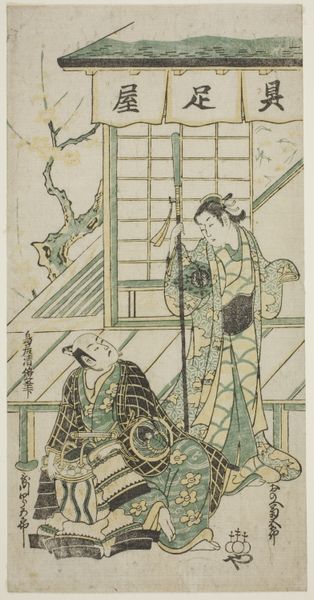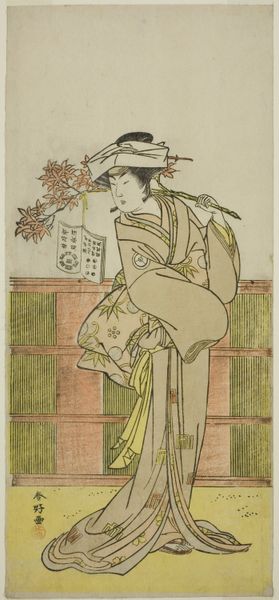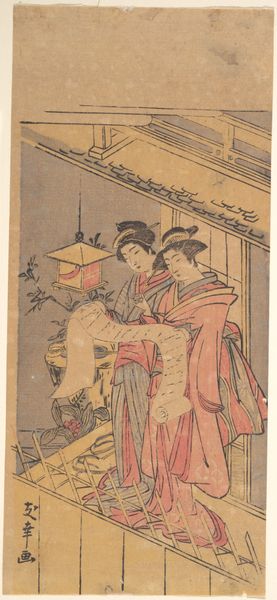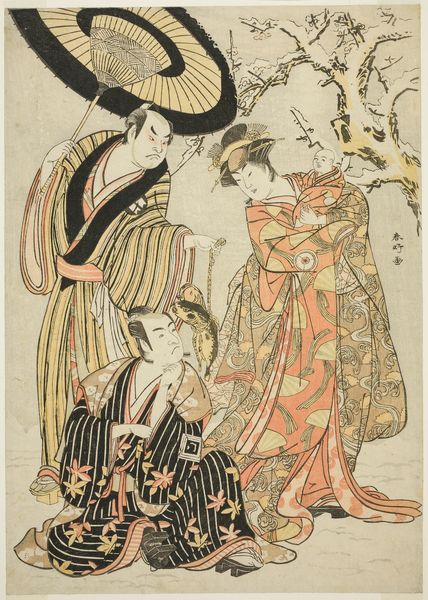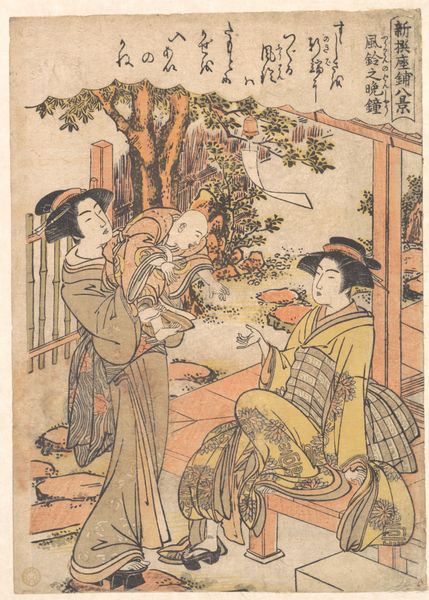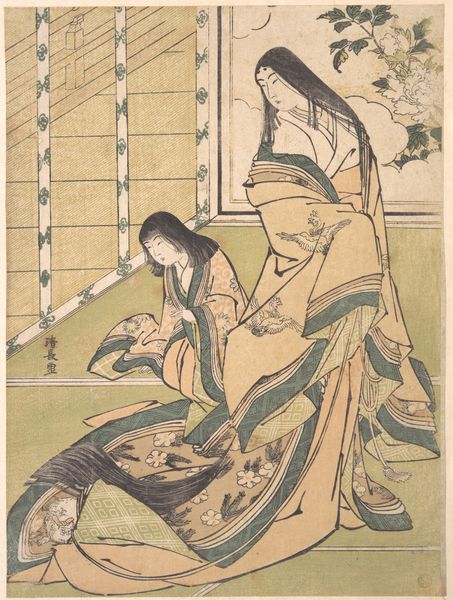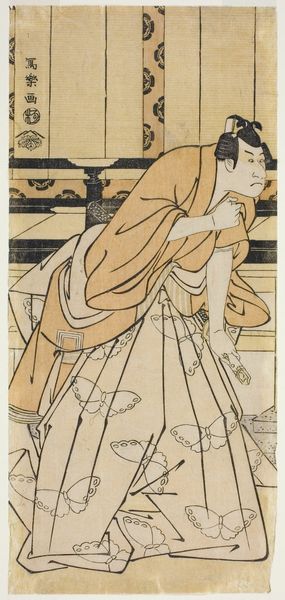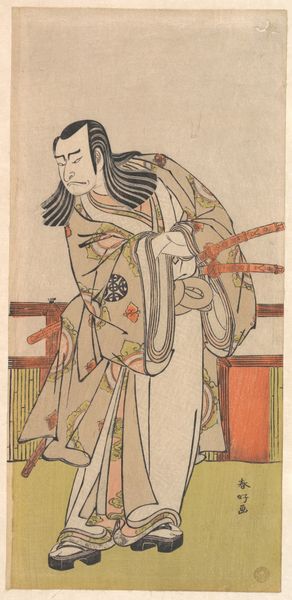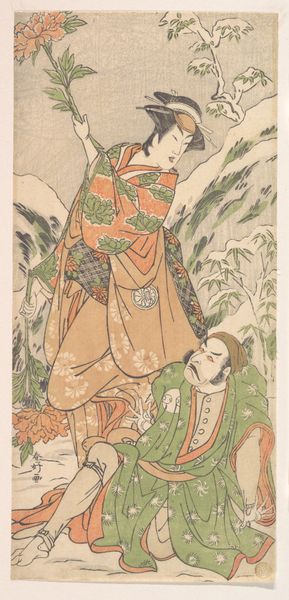
The Actor Segawa Kikunojo III as the Dragon Maiden Disguised as Osaku in the Play Sayo no Nakayama Hiiki no Tsurigane, Performed at the Nakamura Theater in the Eleventh Month, 1790 c. 1790
0:00
0:00
print, woodcut
#
portrait
#
narrative-art
# print
#
pen sketch
#
asian-art
#
ukiyo-e
#
woodcut
Dimensions: 32 × 14.2 cm (12 5/8 × 5 9/16 in.)
Copyright: Public Domain
This woodblock print by Katsukawa Shun'ei captures the actor Segawa Kikunojo III in a Kabuki play, performed in Japan in 1790. The print gives us insight into the social fabric of the Edo period. Kabuki was a popular, and sometimes subversive, form of entertainment. It challenged social norms by allowing cross-dressing and by portraying stories that resonated with the common people. Shun'ei was a member of the Katsukawa school of artists, which specialized in portraying actors. These prints, known as yakusha-e, served as publicity for the actors and the plays, but also captured the essence of Kabuki's dramatic expression. Notice how Shun'ei uses visual codes, such as the actor's pose, the costume, and the stylized waterfall, to convey the drama of the scene. The coins falling around the figure could be symbolic, perhaps indicating wealth, prosperity, or even a kind of spiritual blessing. Historians of art and culture use playbills, theatre records, and other visual materials such as these prints to understand the complex relationship between art, entertainment, and society in different historical contexts.
Comments
No comments
Be the first to comment and join the conversation on the ultimate creative platform.

